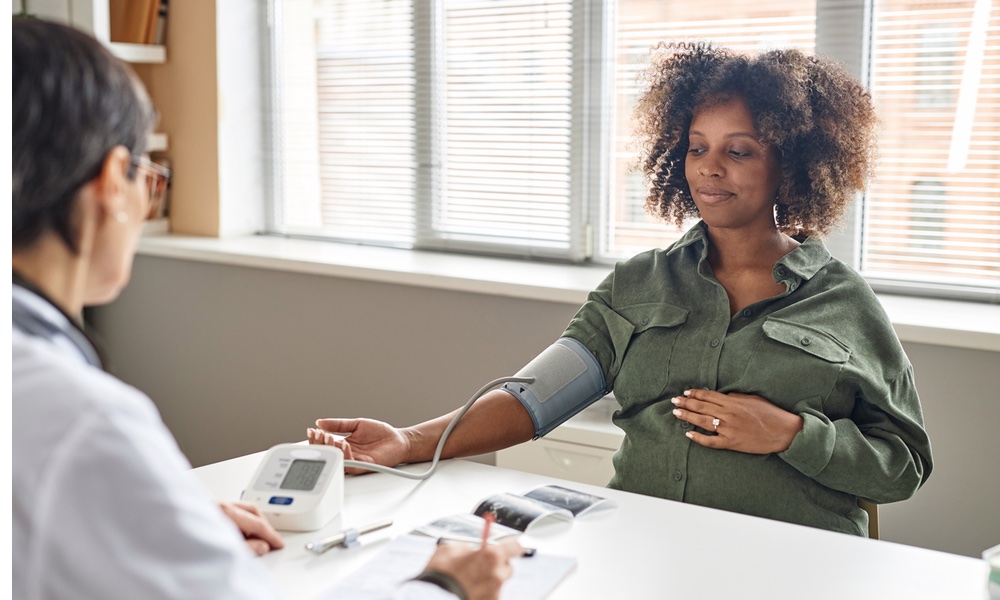Dr. Kirrane is an Assistant Professor, Section of Emergency Medicine, Department of Surgery, Yale University School of Medicine, and Dr. Hoffman is Associate Professor of Emergency Medicine and Medicine, NYU School of Medicine, and Director, New York City Poison Control Center.
What happens when a patient shows up at the emergency room exhibiting signs and symptoms of poisoning? The attending physician in the ER may not immediately know what type of toxin the patient was exposed to. Exposure to toxic compounds — what we tend to call poisoning — may be due to a variety of agents: pharmaceutical drugs, illegal drugs, or even environmental toxins. Poisoning may occur for many different reasons: intentional harm (suicide), deliberate misuse (recreational drug abuse), accidental use (such as ingestions by small children exploring their environment), or by a prescribed dose that causes a toxic reaction.
Poison Control Centers estimate approximately two million exposures to toxins per year; this may be an underestimate of actual exposures, since not all are reported to officials. Some antidotes exist for certain drugs, but if the patient's symptoms are not clear-cut, it is often necessary, and quite possible, to treat the patient with basic supportive care such as IV fluids or vasopressors. Given how relatively common poisoning is, it is useful to know the established guidelines for treatment that the doctor may follow in order to arrive at the best possible outcome. Some of these are described below.[I]t is useful to know the established guidelines for treatment that the doctor may follow in order to arrive at the best possible outcome.
First Steps
Physicians generally evaluate the patient right off the bat for certain basic body functions. Some assessments include the degree to which airways are open or closed, the rate and depth of breathing, and circulation (heart rate, blood pressure, etc.). If the patient appears to have been exposed to a toxin externally (i.e., via the skin), then measures are taken immediately to decontaminate the skin of the toxic substance.
Looking for Clues
Once basic body functions have been deemed stable, the doctor may be able to determine what class of toxin is responsible for the poisoning. One method is to look at pupil size, which can be enlarged in response to certain toxins, or constricted in response to others. Skin texture — wet/moist skin vs. dry, flushed skin — can also be a signal as to what type of toxic substance has been ingested. Patients who are showing clear signs of altered mental status are given a test to determine glucose level, since this is the brain's only nourishment. If the glucose level is low, then doctors will give the patient an IV drip of fluid containing dextrose, a sugar solution.
Electrocardiogams (ECG or EKG) are performed on all patients who exhibit exposure to toxic compounds, as they may be good indicators of the type of toxin involved. For example, a specific change in the pattern of the ECG can indicate the presence of tricyclic antidepressants. Doctors can then treat the patient accordingly and do a repeat ECG to monitor the patient's progress and recovery.
Low Blood Pressure and Poisoning
While many people may be familiar with the risks of hypertension in everyday life, hypotension "or low blood pressure" is a common symptom in poisoned patients and can result from a variety of factors, including dehydration or anaphylaxis (severe allergic reaction). In cases of hypotension, doctors will begin a specific type of IV drip and monitor the patient closely. If the patient does not respond to the IV, a vasopressor "a compound that constricts the blood vessels to increase blood pressure" should be administered. It is important for the physician to keep in mind that the patient may be on prescription antidepressants, which would determine what type of vasopressor is administered.
Decontaminating the Digestive Tract
If the patient has overdosed orally, such as in the case of a medication or drug abuse the doctor will need to evaluate and likely treat the gastrointestinal (GI) tract specifically with one of three methods. The theory goes that the less of the poisonous compound the patient is exposed to, the better. In other words, the effect of the toxin increases with the level of exposure, so it is almost always a good idea to decrease the level of exposure to the GI tract, if possible. There are a few ways for the medical team to do this: administering activated charcoal, orogastric lavage (a.k.a., stomach pumping), and whole bowel irrigation. There are risks and benefits to each method and some controversy exists as to whether each method is useful in the clinical setting.
The hope is that the poisonous substance will be siphoned out of the GI system before it is absorbed and causes further toxicity.
Pumping the Stomach
This method, also known as orogastric lavage, is not so common, mainly because it is invasive and associated with a handful of complications. These include aspiration (taking liquid into the lungs) and esophageal perforation (tearing of the esophagus). The method can, however, be used effectively if the patient has very recently ingested a life-threatening substance. It is done by passing an orogastric tube (via the mouth) into the stomach; liquid is then administered to the patient's stomach in small quantities and sucked back out through the tube. The hope is that the poisonous substance will be siphoned out of the GI system before it is absorbed and causes further toxicity. Studies have shown mixed results for the method's effectiveness, but it is still used in specific situations.
Administering Activated Charcoal
This method is the most common used in treating poisoned patients. The charcoal itself is prepared so that its surface area is at a maximum, which increases the amount of toxin it can absorb. It is usually given to the patient either by mouth or by nasogastric tube, which is passed through the nose to reach the stomach. The success of the process depends on the drug involved and the amount of charcoal that is administered. Optimum absorption has been shown to occur when charcoal is given within one hour of the patient's overdose. However, it has been shown to work after one hour as well, and is considered a fairly effective method of treating oral overdose.
Whole Bowel Irrigation
This is a straightforward, mechanical washout. A large volume of an electrolyte solution is administered through the mouth at a rapid rate until the rectal effluent is clear, in order to mechanically flush out any toxic substances and therefore decrease absorption through the GI tract. No controlled clinical studies have indicated a great benefit to whole bowel irrigation, and there are some complications that can evolve as a result of the treatment. But it is used under specific circumstances, such as when the ingested substance is not absorbed well by activated charcoal or in cases of intentionally ingested packets of drugs (i.e., by people who are known as body-packers).
Though the three methods of gastrointestinal decontamination mentioned above have sometimes not been shown to be of significant benefit in clinical studies, it is important to realize just how difficult studying these mechanisms is. For example, there are some animal and human volunteer studies out there, but these usually involve very small doses of a toxic substance — doses which may not reflect the situation of the real-life poisoned patient. Furthermore, the actual poisoned patient may ingest more than one toxic substance, each of which might have a different method of action on the body. But each of the three GI decontamination methods has specific benefits and ER doctors will use each one under different circumstances, depending on the specific situation of the patient he or she is treating at the moment.
What's the Toxic Substance? Testing for Drugs in the System
Blood Serum Test
While many blood and urine tests for toxic substances can be costly and time-consuming without a specific indication to request one, there is one blood serum test that is routinely done after a patient comes in for suicidal ingestion. This test is for acetaminophen, the active ingredient in Tylenol®. Because the drug is so common in households, many people do not even think of it as a potentially harmful drug — and if it is not viewed as a potentially harmful drug, it may not be reported to doctors as an ingested substance.
Approximately 1 in 500 patients who go to the ER for intentionally ingesting toxic substances (in attempts to do self-harm) will also have potentially toxic acetaminophen levels, even though they do not report that acetaminophen has been ingested. This is difficult for doctors in the ER because a patient can have toxic levels of acetaminophen in the body while having no or non-specific symptoms. If treated early enough, the prognosis is excellent. Doctors may also request blood serum tests if he or she feels there is a likelihood that certain other drugs are involved; these include salicylates (found in aspirin and other pain medications), lithium (a mineral used to treat bipolar disorder), and methanol.There are also some real limitations to urine drug screens.
Urine Screen
Unlike the blood serum test, which can directly measure the presence of a specific substance in the body, the urine screen may not be a terribly effective tool because results can only be interpreted as positive or negative for a certain substance. Among the drugs included in these screens are amphetamines, cannabinoids, cocaine, and opioids. However, if positive results are found in this kind of drug screen, they rarely change the management or outcome of a patient's treatment.
There are also some real limitations to urine drug screens. For one thing, they are not comprehensive, only testing for a small range of certain chemicals, so negative screens don't exclude all possible drug exposures. Also, positive screens can result long after symptoms from the drug have passed. Therefore the presence of the drug in the urine may not actually be responsible for the current condition. This unfortunate effect is one that may often mislead doctors to attribute a patient's symptoms to a specific drug, when actually a different (and non-drug-related) diagnosis should be made. For example, a patient's altered mental state might be attributed to a drug when in fact, it is actually related to an underlying meningitis. However, drug screening is still beneficial in cases of suspected malicious poisoning or to confirm the presence of certain substances in suspected child abuse or neglect.
Seizures
Some drugs may cause seizures. Since the stability of our bodies depends on the balance of excitatory and inhibitory neurotransmitters, if this delicate balance is upset by drug intake, then seizures can occur. For example, drugs that either decrease the production of GABA (the brain's most popular inhibitory neurotransmitter) or that interfere with GABA's receptors in the brain can cause seizures. Additionally, if a drug interferes with the neurotransmitter adenosine, which is a naturally occurring anticonvulsant, then severe and protracted seizures can occur. This can happen after very large ingestions of one of the most popular legal drugs, caffeine. Whatever the cause of the seizure, doctors usually treat seizures with a benzodiazepine, a common anticonvulsant.
Hyperthermia
Hyperthermia is a fairly common result of a variety of drugs; it is defined as the core body temperature being above 39°C or 102.2°F. Some of the culprits include cocaine exposure and alcohol withdrawal, as well as neuroleptic malignant syndrome and serotonin syndrome.
Neuroleptic malignant syndrome is potentially life-threating. It may cause hyperthermia, along with altered mental status and motor movement problems such as rigid muscles and tremors. The disorder typically occurs in response to a sudden drop in the level of the common neurotransmitter dopamine — this can happen either with the addition of medications that block the dopamine receptor or in the withdrawal of medications that mimic the actions of dopamine (which are used in the treatment of Parkinson's disease).
Serotonin syndrome is another that may cause hyperthermia and occurs when there is too much serotonin stimulating specific varieties of serotonin receptors. This can happen in response to high levels of common antidepressants in the body, like monoamine oxidase inhibitors (MAOIs) or selective serotonin reuptake inhibitors (SSRIs), cocaine, MDMA (ecstasy), or even some antibiotics. Like neuroleptic malignant syndrome, there are multiple symptoms other than hyperthermia that can occur (e.g., muscle rigidity, tremors, altered mental status, to name a few), and it can therefore be tricky for the physician to diagnose. However, clonus — involuntary muscle contractions — is the primary means of identifying serotonin syndrome.
Whatever the root of the drug-induced hyperthermia, doctors will generally employ the same series of treatments: rapid cooling, hydration through an IV drip, and removal of the drug from the system. It may be necessary to sedate the patient in these cases, because muscle rigidity and general agitation can prevent effective cooling of the body temperature.
Conclusion
Clearly patients who have been exposed to toxic compounds can show a variety of symptoms, depending on the type of drug involved and the amount of drug taken in. There are some antidotes that exist for certain drugs, but doctors always begin by adhering to some of the basic treatment principles described in this article. Often doctors will consult with their local Poison Control Centers, in order to make absolutely sure that they are treating the patient in the most effective way possible.ADVERTISEMENT




